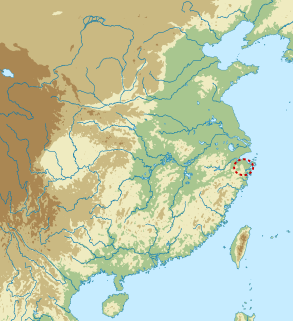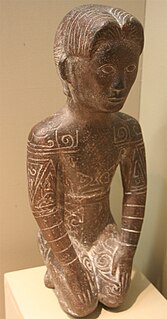 W
WThe 1st National Congress of the Chinese Communist Party was held in Shanghai and Jiaxing between July 23 and August 2, 1921. The Congress established the Chinese Communist Party. It was succeeded by the 2nd National Congress of the Chinese Communist Party. The congress began in a shikumen building of the French Concession area of Shanghai. In early June 1921, Dutch national Henk Sneevliet, also known as Ma Lin, a representative of Comintern, arrived in Shanghai, and urged various Communist cells in the country to get together for a national-level meeting. Russian Comintern representative Nikolski also attended the meeting. At the time, there were 57 members of the Chinese Communist Party. Notably, the two founders of the party did not attend the congress: Chen Duxiu and Li Dazhao.
 W
WThe 2017 China floods began in early June 2017. More than 14.9017 million people in 10 provinces and municipalities and regions were affected, especially the southern and central provinces and regions of Guangxi, Guangdong, Hunan, Hubei, Jiangxi, Jiangsu, Anhui, Zhejiang, Shandong, Shaanxi, Yunnan, Sichuan, Gansu and Henan. Hunan was the hardest hit. A total of 18,100 houses were destroyed, and more than 9,821-square-metre (105,710 sq ft) of crops were inundated.
 W
WSince early June 2020, heavy rains caused by the regional rainy season led to floods severely affecting large areas of southern China including the Yangtze basin and its tributaries. Rains and floods extended to central and eastern China during July and were described as the worst since at least 1998.
 W
WThe Battle of Zhenhai was a minor confrontation that took place on 1 March 1885 between Admiral Amédée Courbet's Far East Squadron and Chinese warships and shore batteries near the coastal city of Zhenhai, 12 miles (19 km) downstream from Ningbo, China during the Sino-French War. French and Chinese sources disagree sharply as to what happened; French sources treat the encounter as a minor incident, while Chinese sources consider it a striking defensive victory. The Battle of Zhenhai is still commemorated in China as an important Chinese victory in the Sino-French War.
 W
WChekiang Province, Republic of China (1912–1955) was the former province in the Republic of China administering Zhejiang. It was abolished after the ROC Forces, ROC government officials and local residents were evacuated from Dachen to Taiwan in 1955 following the military defeat of the ROC by People's Liberation Army forces of the newly-founded People's Republic of China during the Battle of Dachen Archipelago.
 W
WChina Southwest Airlines Flight 4509 (SZ4509) was a domestic flight in China from Chengdu Shuangliu International Airport, Sichuan to Wenzhou Yongqiang Airport, Zhejiang. On February 24, 1999, the Tupolev Tu-154M operating the flight crashed while on approach to Wenzhou Airport, killing all 61 passengers and crew members on board.
 W
WDong'ou also known as Ouyue, was an ancient Yue kingdom in modern Wenzhou and Taizhou, Zhejiang Province, China. The realm of Dong'ou was given to Zou Yao by Emperor Gaozu of Han in 192 BC. It was almost conquered by Minyue in 138 BC, but the king of Don'gou no longer wished to live in his realm after the incident, and had all his people moved into the Han dynasty.
 W
WThe Hemudu culture was a Neolithic culture that flourished just south of the Hangzhou Bay in Jiangnan in modern Yuyao, Zhejiang, China. The culture may be divided into early and late phases, before and after 4000 BC respectively. The site at Hemudu, 22 km northwest of Ningbo, was discovered in 1973. Hemudu sites were also discovered at Tianluoshan in Yuyao city, and on the islands of Zhoushan. Hemudu are said to have differed physically from inhabitants of the Yellow River sites to the north. Some authors propose that the Hemudu Culture was a source of the pre-Austronesian cultures.
 W
WJian ware or Chien ware is a type of Chinese pottery originally made in Jianyang, Fujian province. It, and local imitations of it, is known in Japan as Tenmoku (天目). The ware are simple shapes in stoneware, with a strong emphasis on subtle effects in the glazes. In the Song dynasty they achieved a high prestige, especially among Buddhist monks and in relation to tea-drinking. They were also highly valued in Japan, where many of the best examples were collected. Though the ceramic body is light-coloured, the wares, generally small cups for tea, bowls and vases, normally are glazed in dark colours, with special effects such as the "hare's fur" "oil-spot" and "partridge feather" patterns caused randomly as excess iron in the glaze is forced out during firing.
 W
WJiangzhe province (江浙行省) was a province of the Yuan dynasty established in 1276. It included the southern portion of Jiangsu south of the Yangtze River, Zhejiang, Fujian and part of northern Guangdong. With capital was initially at Yangzhou, but in 1297 it was moved to Hangzhou Lu.
 W
WLiangzhe Circuit (997–1160s) was one of the major circuits during the Song dynasty (960–1279). Its administrative area corresponds roughly to modern Zhejiang, Shanghai, and southern Jiangsu. The fertile Yangtze River Delta lay within Liangzhe Circuit, as did Lake Tai. Liangzhe was the wealthiest circuit in Song.
 W
WThe Liangzhu culture was the last Neolithic jade culture in the Yangtze River Delta of China. The culture was highly stratified, as jade, silk, ivory and lacquer artifacts were found exclusively in elite burials, while pottery was more commonly found in the burial plots of poorer individuals. This division of class indicates that the Liangzhu period was an early state, symbolized by the clear distinction drawn between social classes in funeral structures. A pan-regional urban center had emerged at the Liangzhu city-site and elite groups from this site presided over the local centers. The Liangzhu culture was extremely influential and its sphere of influence reached as far north as Shanxi and as far south as Guangdong. Liangzhu site was perhaps among the oldest Neolithic sites in East Asia that would be considered a state society. The type site at Liangzhu was discovered in Yuhang County, Zhejiang and initially excavated by Shi Xingeng in 1936. A 2007 analysis of the DNA recovered from human remains shows high frequencies of Haplogroup O1 in Liangzhu culture linking this culture to modern Austronesian and Tai-Kadai populations. It is believed that the Liangzhu culture or other associated subtraditions are the ancestral homeland of Austronesian speakers.
 W
WThe Longyou Caves, also called the Xiaonanhai Stone Chambers, are a group of 24 artificial sandstone caverns located at Fenghuang Hill, near the village of Shiyan Beicun on the Qu River in Longyou County, Quzhou prefecture, Zhejiang province, China. Created more than 2,000 years ago, they were not recorded in any historical documents and were rediscovered by farmers in 1992.
 W
WThe Majiabang culture was a Chinese Neolithic culture that existed at the mouth of the Yangtze River, primarily around Lake Tai near Shanghai and north of Hangzhou Bay. The culture spread throughout southern Jiangsu and northern Zhejiang from around 5000 BC to 3300 BC. The later part of the period is now considered a separate cultural phase, referred to as the Songze culture.
 W
WAs trade was an important source of wealth for the Yue tribes of coastal China, the region south of the Yangtze River attracted the attention of Emperor Qin Shi Huang, and he undertook a series of military campaigns to conquer it. Lured by its temperate climate, fertile fields, maritime trade routes, relative security from warring factions to the west and northwest, and access to luxury tropical products from Southeast Asia, the emperor sent armies to conquer the Yue kingdoms in 221 BC. Military expeditions against the region were dispatched between 221 and 214 BC. It would take five successive military excursions before the Qin finally defeated the Yue in 214 BC.
 W
WThe Songze Culture was a Neolithic culture that existed between 3800 and 3300 BCE in the Lake Tai area near Shanghai.
 W
WThe Southward expansion of the Han dynasty was a series of Chinese military campaigns and expeditions in what is now modern Southern China and Northern Vietnam. Military expansion to the south began under the previous Qin dynasty and continued during the Han era. Campaigns were dispatched to conquer the Yue tribes, leading to the annexation of Minyue by the Han in 135 BC and 111 BC, Nanyue in 111 BC, and Dian in 109 BC.
 W
WThe Wenzhou train collision occurred on 23 July 2011 when two high-speed trains travelling on the Yongtaiwen railway line collided on a viaduct in the suburbs of Wenzhou, Zhejiang province, People's Republic of China. The two trains derailed each other, and four cars fell off the viaduct. 40 people were killed, at least 192 were injured, 12 of which were severe injuries. This serious traffic disaster was caused by both the critical defects of design and the rough management of the bullet train company. Officials responded to the accident by hastily concluding rescue operations and ordering the burial of the derailed cars. These actions elicited strong criticism from Chinese media and online communities. In response, the government issued directives to restrict media coverage, which was met with limited compliance, even on state-owned networks.
 W
WYue, also known as Yuyue (於越), was a state in ancient China which existed during the first millennium BC – the Spring and Autumn and Warring States periods of China's Zhou dynasty – in the modern provinces of Zhejiang, Shanghai and Jiangsu. Its original capital was Kuaiji ; after its conquest of Wu, the Kings of Yue moved their court north to the city of Wu and survived until 214 BC. When the Chinese were reunified into Qin Dynasty, Yue become a vassal of the Chinese state.
 W
WThe Baiyue, Hundred Yue, or simply Yue, were various ethnic groups who inhabited the regions of Southern China to Northern Vietnam in the 1st millennium BC and 1st millennium AD. They were known for their short hair, body tattoos, fine swords, and naval prowess.
 W
WZhejiang Airlines was an airline based in Jianqiao Airport in Hangzhou, Zhejiang, China. The airline was wholly owned by China National Aviation Holding. During 2004, as part of a consolidation of the Chinese aviation industry, Air China absorbed Zhejiang Airlines when CNAC was merged into Air China.
 W
WThe Zhejiang-Jiangxi campaign, also known as Operation Sei-go, was a campaign by the China Expeditionary Army of the Imperial Japanese Army under Shunroku Hata and Chinese 3rd War Area forces under Gu Zhutong in the Chinese provinces of Zhejiang and Jiangxi from mid May to early September 1942.